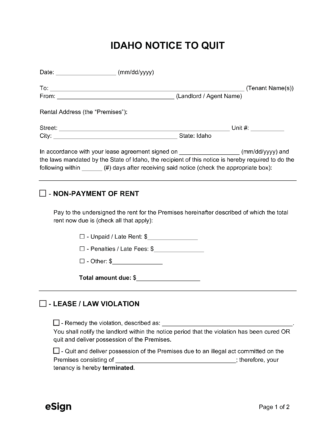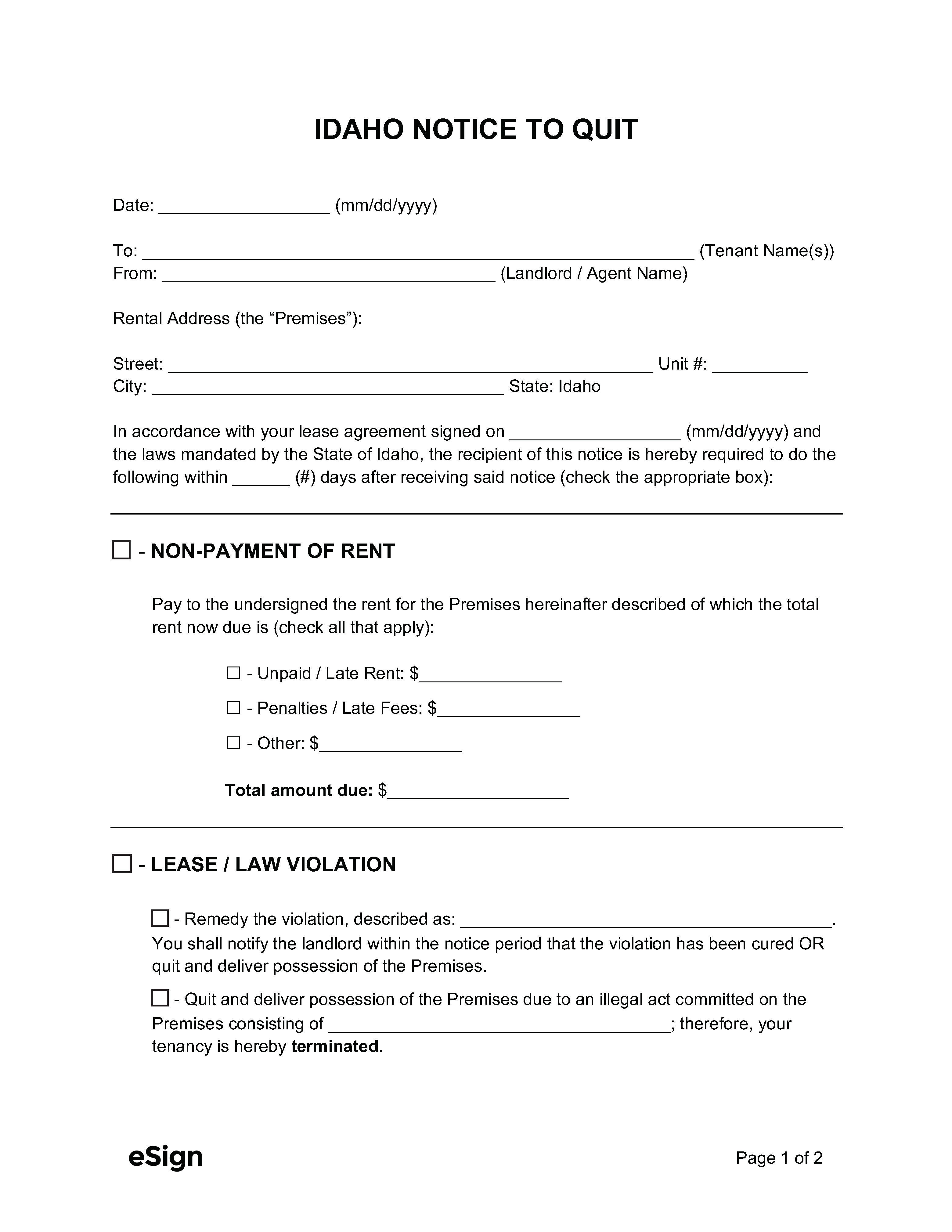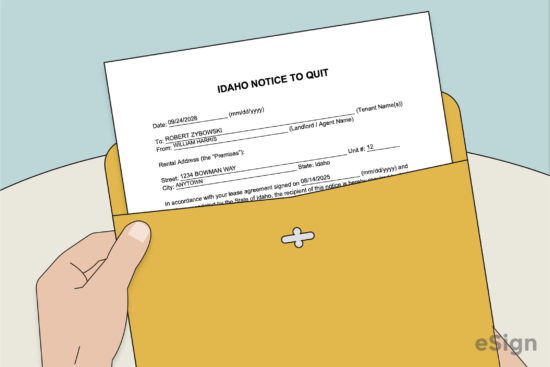Eviction Notices: By Type (4)
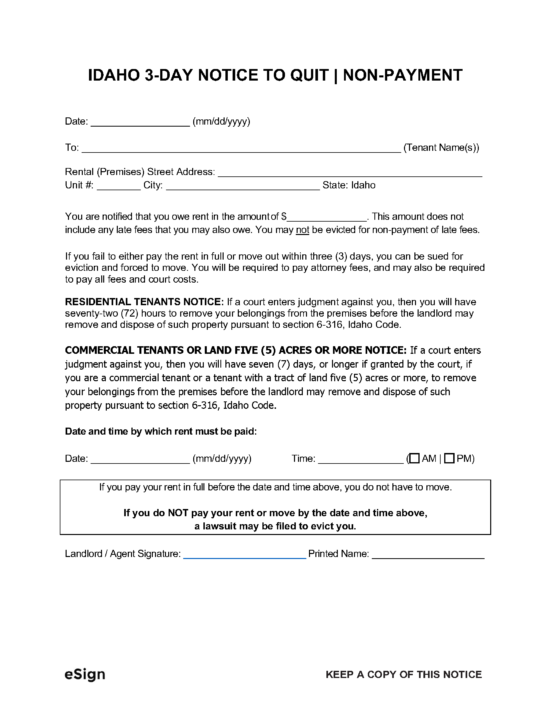
3-Day Notice to Quit | Non-Payment – Provides a tenant three days to pay past due rent or leave the property.
Download: PDF
|
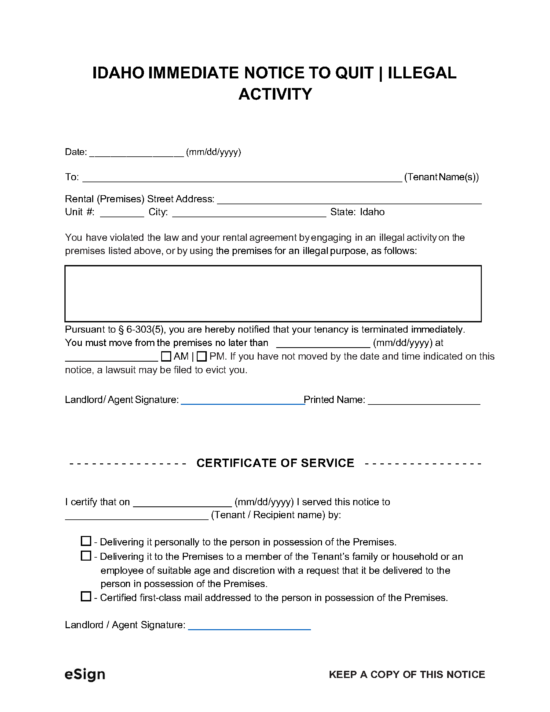 Immediate Notice to Quit | Illegal Activity – Notifies a tenant their rental agreement is terminated and they must vacate the premises due to illegal activity. Immediate Notice to Quit | Illegal Activity – Notifies a tenant their rental agreement is terminated and they must vacate the premises due to illegal activity.
Download: PDF, Word (.docx), OpenDocument |
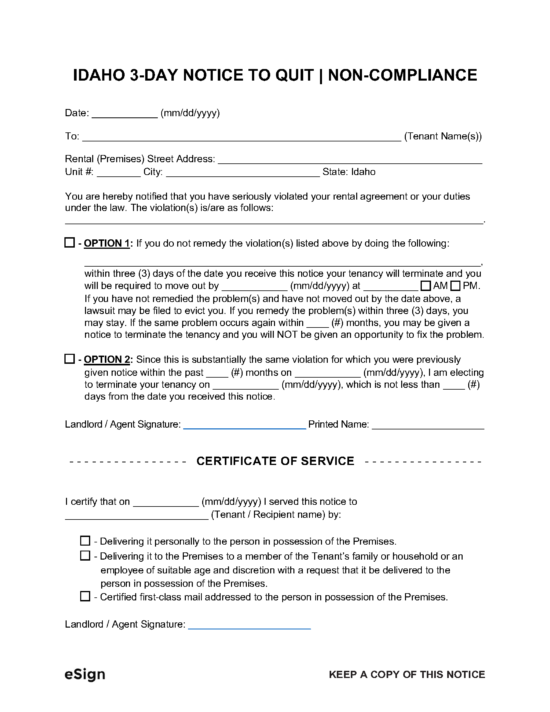 3-Day Notice to Quit | Non-Compliance – Served on a tenant who has violated their lease, giving them three days to cure or leave. 3-Day Notice to Quit | Non-Compliance – Served on a tenant who has violated their lease, giving them three days to cure or leave.
Download: PDF, Word (.docx), OpenDocument |
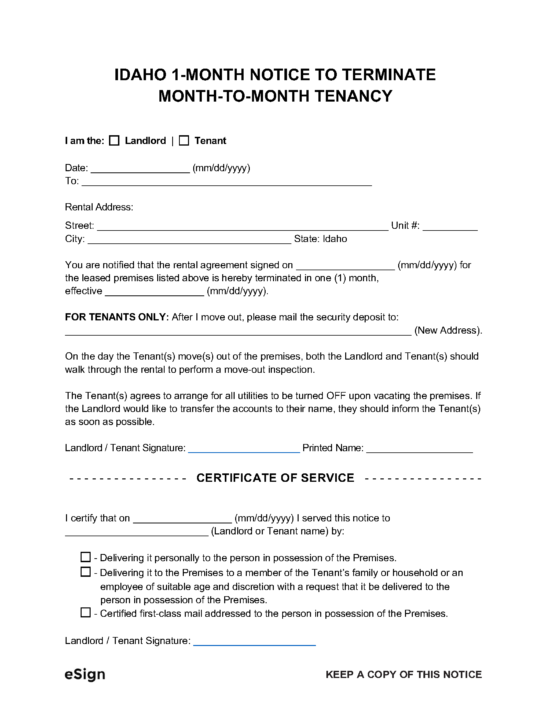
1-Month Notice to Terminate | Month-to-Month Lease – Ends a month-to-month lease by giving the landlord or tenant one month’s notice
Download: PDF, Word (.docx), OpenDocument
|
Notice Requirements
How to Evict a Tenant in Idaho
Step 1 – Notice to Quit
Before a landlord can file for eviction, they must prepare a notice to quit for the tenant.
Step 2 – Serve Notice
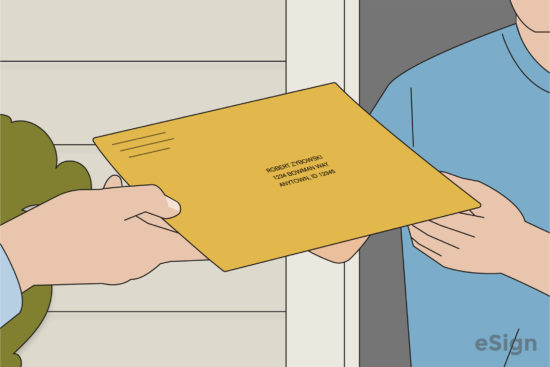
The landlord should keep a copy of the notice to quit for their records and deliver a copy to the tenant. Service can be completed using one of the following methods:
- Deliver to the tenant in person.
- Deliver to a person of suitable age who lives on the property AND mail a copy to the tenant.
- Post notice in a conspicuous location on the property AND mail a copy to the tenant.
If the landlord is serving a notice to quit for non-payment, they must complete a 3-Day Notice Affidavit of Service and have it notarized.
Step 3 – File Unlawful Detainer Action
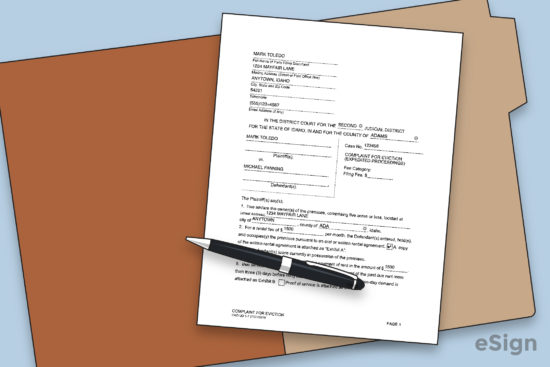
If the tenant has not cured the violation or vacated the premises within the notice period, the landlord can file for eviction. The landlord will either go through an expedited eviction process (non-payment/illegal acts) or a standard process (lease violations/termination).
The landlord will need to complete a Complaint and Summons and file them with the district court in the county where the property is located, after which a hearing will be set.
The Court Assistance Office only provides online forms for non-payment evictions. For all other violations, landlords should contact their district court.
Step 4 – Serve Complaint and Summons

Step 5 – Tenant’s Answer (If Applicable)
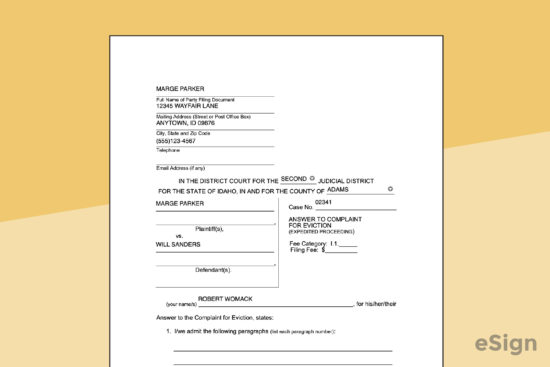
If the tenant is being evicted due to a lease violation or their lease was not renewed, they have 21 days to file an Answer to Complaint for Eviction with the court and deliver a copy to the landlord.
If they file an answer on time, the parties will have to attend the hearing. If they do not answer, the landlord can file for default judgment, and the tenant must handover possession of the property and may have to pay for damages.
Step 6 – Hearing
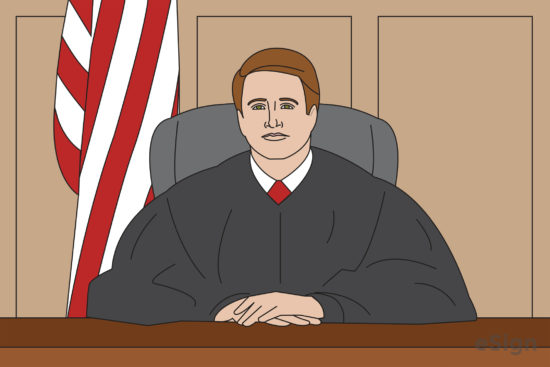
Step 7 – Writ of Restitution of Premises

Court Forms + Resources
Forms
- 3-Day Notice Affidavit of Service
- Signed by: Process Server and Notary Public
- General Civil Case Information Sheet
- Signed by: N/A
- Complaint for Eviction (Expedited Proceeding)
- Signed by: Landlord
- Summons for Eviction
- Signed by: Deputy Clerk
- Affidavit of Service of Summons and Complaint for Eviction
- Signed by: Process Server
- Answer to Complaint for Eviction
- Signed by: Tenant
- Judgment for Eviction
- Signed by: Judge and Deputy Clerk
- Writ of Restitution of Premises
- Signed by: Deputy Clerk
Resources
